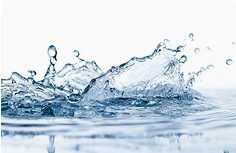Jul 28, 2025
Water quality monitoring is crucial in fields such as environmental protection, water management, aquaculture, and industrial wastewater treatment, and selecting appropriate sensors is key to ensuring data accuracy and system stability. This article will provide an in-depth analysis of the measurement principles, selection points, and typical application scenarios of the four core parameters of pH, ORP (oxidation-reduction potential), turbidity, and dissolved oxygen (DO), to help you make the best decisions.
1. pH sensor: precise monitoring of acidity and alkalinity
measuring principle
The pH sensor is based on the glass electrode method and determines the acidity or alkalinity of the solution (0-14 range) by measuring the activity of hydrogen ions.
Key factors for selection
✅ Accuracy: Laboratory grade (± 0.01pH) vs Industrial grade (± 0.1pH)
✅ Temperature compensation: Is automatic temperature compensation (ATC) function necessary?
✅ Electrode material:
Glass electrode (universal type, suitable for most water quality)
Antimony electrode (suitable for HF or high alkaline solutions)
Solid state electrode (anti pollution, suitable for sewage)
Typical applications
Drinking water treatment (standard pH 6.5-8.5)
Wastewater treatment (anaerobic/aerobic process pH control)
Aquaculture (suitable pH 6.5-9.0 for fish)
2. ORP Sensor: Measurement of Redox Ability
measuring principle
ORP (Oxidation Reduction Potential) sensors measure the electron transfer ability (in mV) of a solution and are used to determine the oxidizing or reducing properties of water quality.
Key factors for selection
✅ Range: Generally -2000mV~+2000mV, chlorine disinfection system requires a higher range
✅ Electrode type:
Platinum electrode (high precision, suitable for laboratory use)
Gold electrode (resistant to hydrogen sulfide interference, suitable for wastewater treatment)
✅ Calibration method: Regular calibration with ORP standard solution (such as ZoBell solution) is required
Typical applications
Swimming pool disinfection (ORP>650mV indicates effective chlorine sterilization)
Industrial wastewater treatment (monitoring redox reaction efficiency)
Groundwater remediation (monitoring the degradation of reducing pollutants)
3. Turbidity sensor: detection of suspended solids in water
measuring principle
The turbidity sensor measures the concentration of particulate matter in water using optical scattering method (90 ° or 180 ° scattered light), with units of NTU (Nephelometric Turbidity Units).
Key factors for selection
✅ Range:
Low turbidity (0-10NTU, suitable for drinking water)
High turbidity (0-1000NTU, suitable for sewage)
✅ Light source type:
LED light source (low-cost, suitable for general monitoring)
Laser light source (high precision, suitable for low turbidity detection)
✅ Anti fouling design: Is it equipped with an automatic cleaning brush or air blowing?
Typical applications
Waterworks (effluent turbidity<1NTU)
River monitoring (sediment content change after rainstorm)
Beer/Beverage Production (Liquid Clarity Control)
4. Dissolved oxygen (DO) sensor: a key indicator of water oxygen content
measuring principle
Optical method (fluorescence method): Based on the quenching effect of oxygen molecules on fluorescence, the maintenance cost is low.
Polarography (Clark electrode): The electrolyte needs to be replaced regularly, but the response is faster.
Key factors for selection
✅ Measurement range: 0-20mg/L (conventional) vs 0-50mg/L (high oxygen environment)
✅ Response time: Optical method (about 15 seconds) vs Polarographic method (about 5 seconds)
✅ Applicable scenarios:
Aquaculture (requires long-term stability, using optical methods)
Wastewater treatment (requires rapid response, choose polarographic method)
Typical applications
Fish farming (DO>5mg/L to ensure survival rate)
Wastewater treatment (aerobic process with DO controlled at 2-4mg/L)
Environmental monitoring (ecological assessment of dissolved oxygen in lakes/oceans)
5. Comprehensive selection suggestions
Parameter
Key selection factors
Recommended Sensor Types
Typical industries
pH
Accuracy, temperature compensation, electrode material
Glass electrode (laboratory), antimony electrode (strong acid)
Water treatment, chemical industry
ORP
Range and anti-interference ability
Platinum electrode (high precision), gold electrode (resistant to hydrogen sulfide)
Swimming pool, electroplating wastewater
Turbidity
Range and anti fouling design
LED light source (conventional), laser (high-precision)
Tap water and beverage production
DO
Response time, maintenance requirements
Optical method (long-term monitoring), polarographic method (rapid detection)
Aquaculture and sewage treatment
6. Frequently Asked Questions and Answers
Q1: How to calibrate water quality sensors?
PH: Use pH 4.01/7.01/0.01 standard buffer solution
ORP: Use ZoBell or Light's Solution
Turbidity: Use Formazine standard solution
DO: Zero oxygen calibration (Na ₂ SO3 solution)+saturated oxygen calibration
Q2: How can the lifespan of sensors be extended?
Regular cleaning (especially for turbidity sensors)
Avoid prolonged dry storage (pH/ORP electrodes need to be soaked in storage solution)
Choose anti pollution coating (such as PTFE protective film)
Q3: How to choose wireless transmission?
4G/NB IoT (remote monitoring)
LoRa (low power consumption, suitable for areas without signal)
7. Conclusion
Choosing a suitable water quality sensor requires comprehensive consideration of measurement requirements, environmental adaptability, maintenance costs, and other factors. This article provides a detailed analysis of the principles and selection guidelines for the four major parameters of pH, ORP, turbidity, and dissolved oxygen, to help you optimize your water quality monitoring plan.
📌 If you need customized solutions or product inquiries, please feel free to contact our technical team! 🚀
Read More
